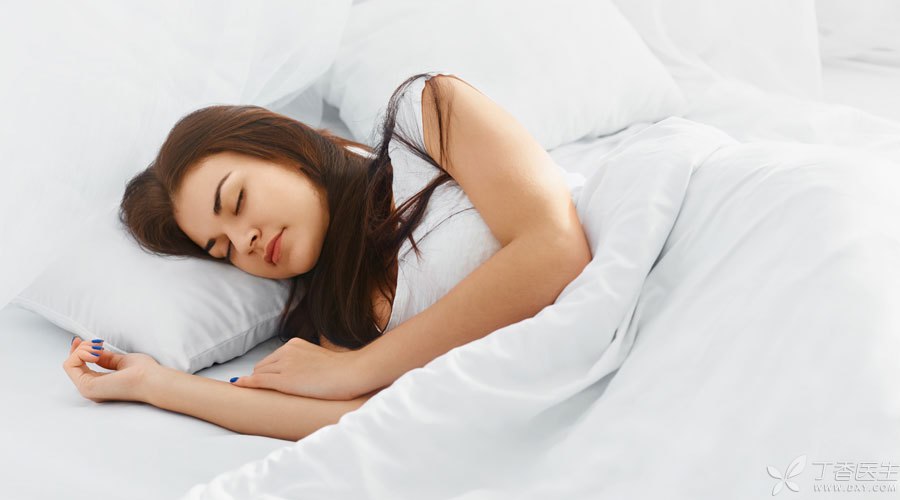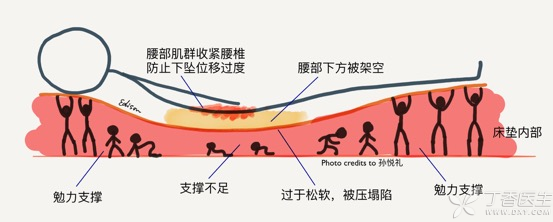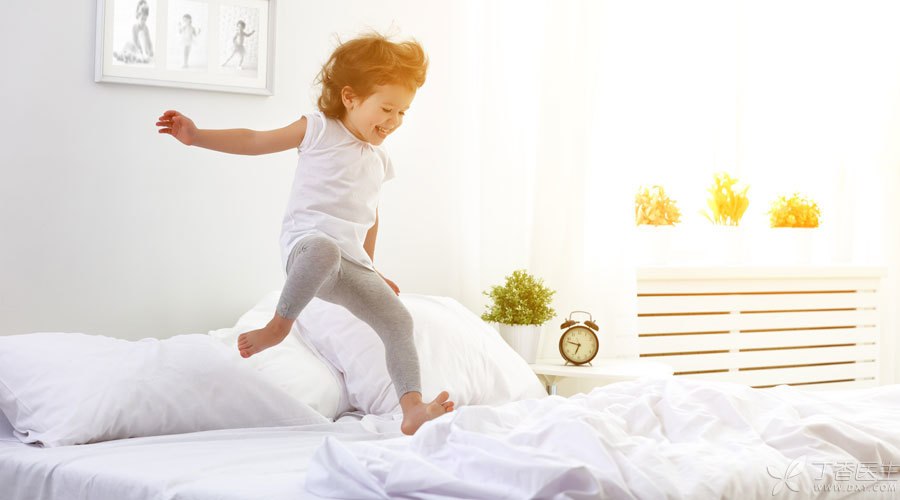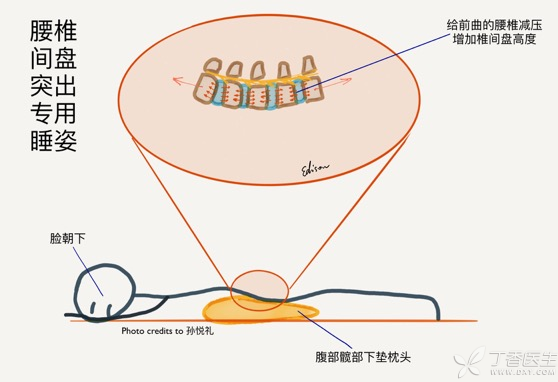
Each person sleeps about 8 hours a day, and we spend one third of our life in bed.
Lying down to sleep is to relax and rest, especially the spine should be completely relaxed, so as to better meet the pressure of upright activities on the spine during the day.
A suitable bed (mat) can not only bring good sleep, but also benefit the waist, back and spine.
But what kind of bed (mat) is suitable? Today Dr. Clove will tell you about it.
The bed is too soft and the waist hurts.
Many people have slept on soft and comfortable sofas, but they often wake up and find that the whole person has [sank] into the sofa. Later, backache will remind you that you have not had a good rest at all.
Why is this happening? The reason lies on the sofa.
The sofa is too soft, resulting in inappropriate sleeping posture and wrong position of spine, especially lumbar spine.
In order to keep the spine as normal as possible, the small muscle groups around the spine will contract together to maintain stability. Over time, fatigue will occur in the small muscle groups, resulting in stiffness, soreness and swelling, thus causing waist soreness and backache.

Since the soft is not good, then the problem arises-
Is it good for waist and spine to sleep in a hard bed?
As mentioned earlier, a mattress that is too soft does not support the waist enough. When lying down, [the depression is very large], whether lying on your back or on your side, the spine will bend excessively, which is not good for your body.
There are also some people who believe that sleeping in a hard bed is better for the spine, but this is also wrong.
Hard beds (mats) will compress back nerves and affect blood circulation. These local oppressions will make people feel uncomfortable quickly. It is inevitable that they will toss and turn during sleep and even involuntarily form some wrong postures to offset discomfort, which is also bad for their health.

Therefore, the bed is too soft or too hard.
So, what problems should we pay attention to when choosing a suitable bed (mat)?
Selection Key Point 1: Material and Support

A good mattress should keep the spine level when the human body sleeps in the lateral position, and support the weight of the whole body on average when sleeping in the supine position.
Among them, the most critical point is the waist, which has relatively weak muscles but needs support very much.
Mattresses made of different materials will make the body sag at different depths and support the waist differently. Let’s take a look at some common ones.
1. Spring type
The most common is the spring bed (pad), which has good elasticity, strong air permeability and relatively high hardness, but needs to pay attention to maintenance.
If the stress on the bed surface is excessive, the softer part of the outer layer of the mattress will collapse, and people’s back will directly contact the spring inside the mattress when sleeping, which will become very uncomfortable.
2. Palm Compilation
A few years ago, the common palm mattress was moderately hard and soft. It was woven from palm fibers, so its flexibility was especially good.
However, this material is more flexible than strong enough. If it is used too hard, it will easily collapse and deform. Moreover, because it is a natural material, it will also suffer from moth damage or mildew.
3. Latex material type
Latex mattress can conform to the curve of human body and contact human body to a greater extent, so that the pressure of human body can be better evenly dispersed and all-round support can be achieved.
However, latex mattresses also have disadvantages, that is, they are not helpful for sleeping posture.
If the bad sleeping posture is used to form [memory] on the latex material, then the depression and protrusion of this mattress will repeatedly strengthen people’s bad sleeping posture, which will make the problem more and more serious.
Selection Point 2: Sleep Comfort
Generally speaking, a relatively strong mattress, which is not soft or hard, will give enough support to the waist. However, personal feelings and comfort are still important reference standards, otherwise a good sleeping posture is impossible.
There are three aspects worth considering:
Step 1 Weight
Lightweight people are thinner and generally can’t stand the bumping of hard plank beds and won’t let the mattress sink too much, so they need to sleep on softer mattresses.
However, people who are heavier should consider sleeping on relatively hard mattresses, so that human pressure can be more evenly distributed on the mattresses.
2. Gender
Generally speaking, women’s hips are wider than their waist, and the curve of their waist is more obvious. To fully support their bodies, mattresses need relatively soft and elastic mattresses.
The weight of men is mainly distributed in the upper half of the body, so a harder mattress is needed.
When many friends have just set up a new home, they will spend a lot of time shopping in the home market together, lying down one by one on the mattress, and finally choosing a double bed that both of them think is suitable.
I think this is an important communication link in the early marriage life, and I strongly recommend everyone to do the same!
3. Special treatment should be given to people with spinal problems.
In addition to the hardness of the bed (mat), people with spinal problems may have to take some seemingly [unhealthy] sleeping positions.
For example, for some people with degeneration or even protrusion of lumbar intervertebral disc, their pain often comes from excessive pressure inside the intervertebral disc, and doctors may suggest sleeping on their stomach.
In order to better support, a small hard flat pillow can also be placed under the hip and abdomen. This sleeping posture helps relieve the pressure on the waist.

At least, we can find a suitable bed (mat) before we find a suitable bed partner, right?
